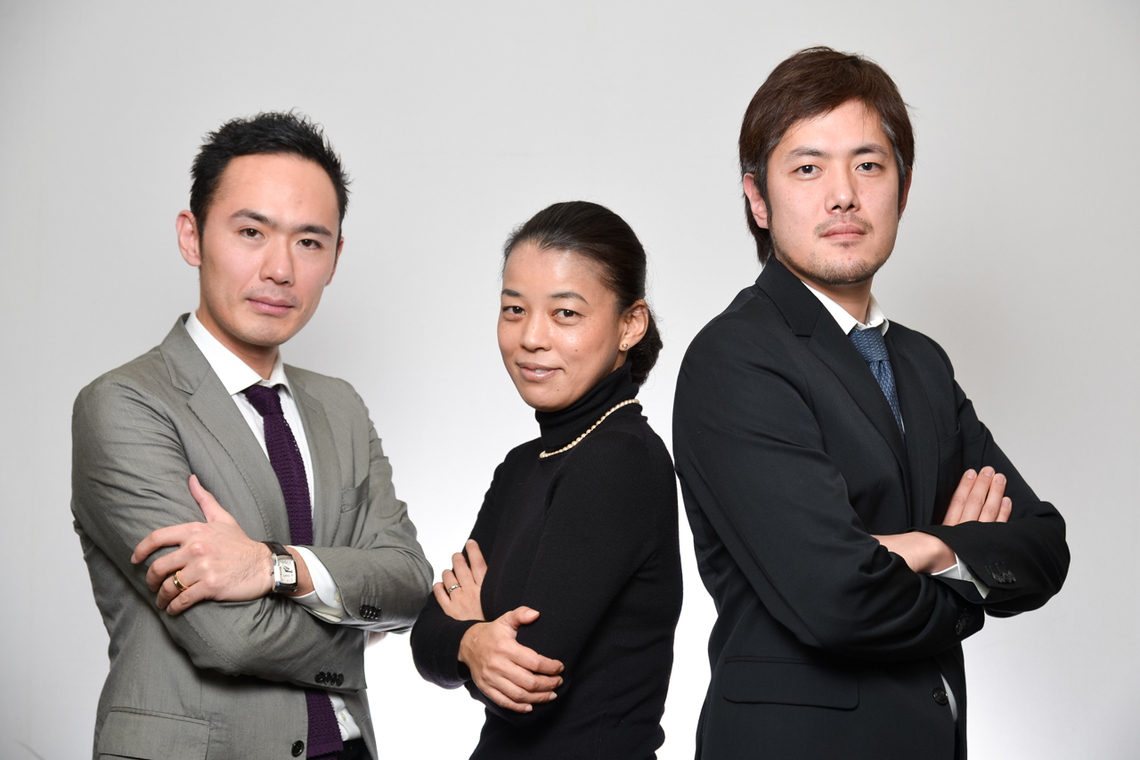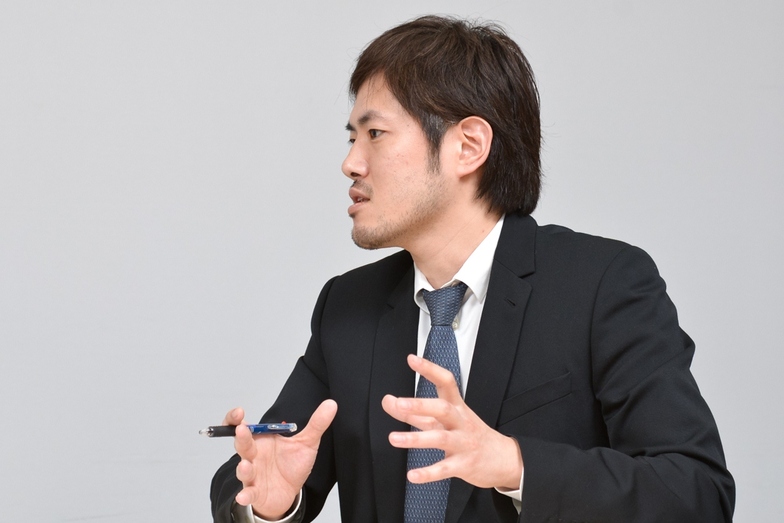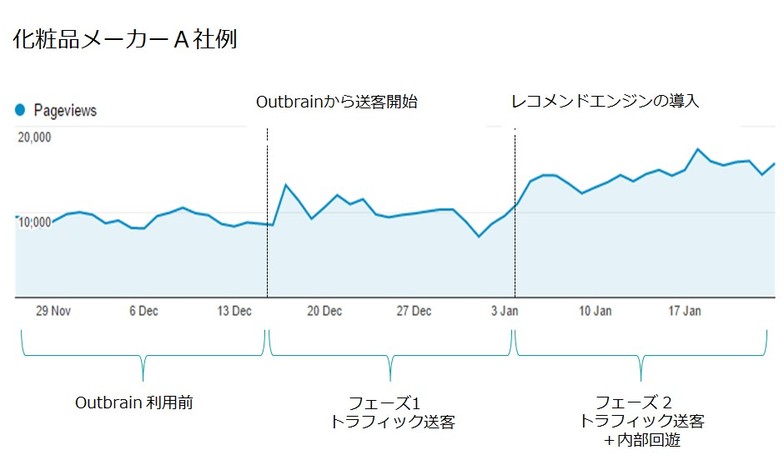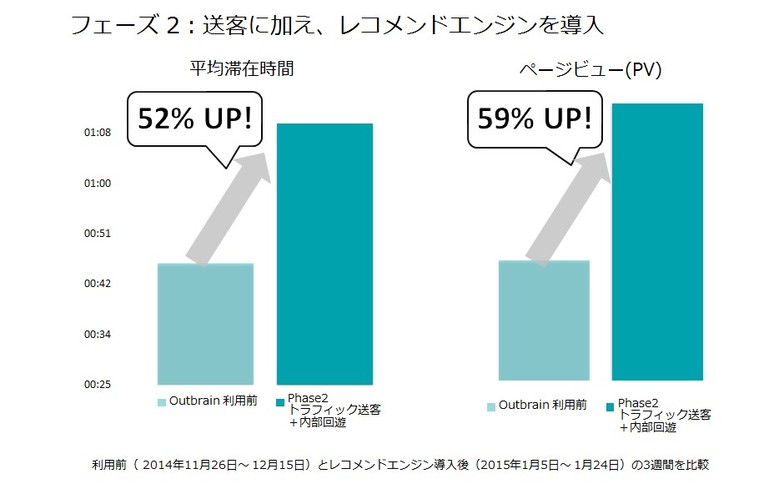This is the second installment discussing content marketing from a distribution perspective. This time, we introduce specific cases where Outbrain was implemented in Japan and tangible results were achieved. We have previously covered Outbrain in past articles. Please refer to those for an overview of the service.

From left:Keigo Aoki (Dentsu Inc.), Akiko Gunji (Dentsu Inc.), Hiroshi Shimose (Outbrain Japan)
Gunji: To reiterate from last time, one characteristic of content marketing is its ability to uncover latent needs. However, the danger lies in unknowingly adopting a sender-centric mindset while claiming to practice content marketing.
Shimose: This is a common observation in the U.S. too. Many companies haven't quite reached the point of truly practicing content marketing in its full sense.
Gunji: Hearing that is somewhat reassuring... I'm not sure if this is the right way to put it, but when I hear about American companies leading the way in content marketing, it's like they're at a certain point on Mount Fuji's ascent. Where would you say Japanese companies are in terms of that scale?
Shimase: Hmm, purely subjectively, I'd say American companies as a whole are around the fifth station, though there are variations. In other words, there's still plenty of room to grow. It feels like a Mount Fuji climbing boom started around two years ago, and already about 80% of marketers are trying content marketing in some form. In Japan, the level varies widely—from those who are just curious because they've heard there's this great mountain called Fuji, to others who are already struggling at the ninth station. But overall, I still feel Japan hasn't quite reached the level of the U.S. yet.
Gunji: Could you tell us how far advanced companies overseas have progressed?
Shimose: If I start listing examples, the diversity in content angles and funnels is so vast that I could easily name about 100 different approaches. Take this water server company: traditionally, they created landing pages and drove traffic there through display ads, search-linked ads, and SEO. However, once they reached saturation in their market area—meaning they'd reached everyone likely to buy a water server—growth stalled. People don't typically replace them immediately after buying one. That's when they introduced Outbrain.
Their approach was fascinating: they prepared diverse content around the keyword "water." For example, how much water pregnant women should drink, how much infants should drink, or the ideal amount of water to drink during a full marathon. By using this content as an entry point to drive inquiries to their call center, operators could understand what content each caller had read before contacting them. As a result, instead of just saying "Our water is good," "Hard water isn't suitable for babies. Our water is very gentle, even for infants." This enabled personalized, tailored service for each individual.

Aoki: This case exemplifies selling an experience rather than just a product.
Shimose: Exactly. It's not just about selling water; it's about "supporting life with water." I find it interesting as an example of blending real and digital channels for personalized engagement, much like CRM for direct existing customers.
Gunji: Many people know that using Outbrain helps distribute content to those who need it, but they often don't realize it also enables planning, including the measurement aspects you discussed last time. Could you elaborate on that?
Shimase: We created content for an apparel brand where the brand's designer selected answers to the question, "What's the coolest outfit for this fall?" Ranking high in SEO is difficult, but it's popular content that readers enjoy. If this were simply a release of the brand's new fall collection, it wouldn't generate much interest. The key is creating articles readers want to read and using that as a gateway to drive actual sales. Outbrain enables this because its recommendations start from user interest, not just relevance. Also, if we only recommended apparel articles to readers browsing apparel sections, we'd only reach existing customers. But Outbrain finds users interested in that article and drives them to the content. This lets us understand what content pairs well with which article categories, what titles are popular, and what combinations lead to the highest conversions.
Gunji: So it's about using content to draw out unseen needs. Creating content to elicit these needs involves a blend of data and human insight, plus the technical skill of planning. This is an area where our people, trained in planning that generates 100 or even 200 different angles for a single theme, excel.
Shimose: The apparel example we discussed earlier can also be applied to e-books. While people rarely search for anything other than the specific title they want to buy, by preparing content with various angles—like "Mysteries to Read This Spring" or "10 Books to Understand the ◯◯ Issue"—you can spark interest and ultimately sell products.
◆Examples of tangible results emerging within Japan
Shimase: In direct marketing cases, we're seeing surprising results emerge in Japan too. A cosmetics manufacturer started using Outbrain in mid-December last year. They had two objectives. Phase 1: Drive traffic from Outbrain's network to their owned media to gather readers. Phase 2: Implement our recommendation engine on their owned media to encourage readers to browse more of the site through internal content recommendations.
The marketers comprehensively gathered information on skin concerns for the owned media. For example, they researched every search term to identify what information users were seeking, then prepared articles that provided answers. The content covered a wide range of topics; they prepared everything they could think of that readers would likely want to know. Naturally, promoting their own products took a backseat. Even if it was a competitor's product, if they felt it offered value to users, they actively featured it. I think that was a significant decision.
Gunji: Being that thorough is actually incredibly difficult, isn't it?
Shimose: Yes. Looking at Figure 1, you can see page views started rising slightly from December 16th. Traffic dipped over the New Year period because we paused the campaign, but we felt it was a waste if visitors who came to the site left without reading other articles. So, we proposed adding our recommendation widget to increase engagement within the site and implemented it starting January 5th. This was Phase 2. From here, page views started climbing significantly.

Figure 1
Throughout Phase 1 and Phase 2, we successfully drove a very high volume of unique users. The client highly valued that over 90% of these unique users were new visitors, and this rate has been maintained even now, over five months later. Moving into Phase 2, we began driving actual traffic while simultaneously promoting site navigation through recommendations. This resulted in both average session duration and page views increasing by over 50% ( Figure 2 ). Our client was both surprised and delighted by this effect.

Figure 2
Additionally, this client has an official website alongside their owned media, where they conduct e-commerce. Traffic to that site also increased by about 20%.
Incidentally, currently, the conversion rate for the newly created owned media is significantly higher than that of the official site. We believe the reason for this is that, as mentioned earlier, the media is operated with a very neutral stance—recommending products from other companies as well—which has earned the trust of users. After all, the official site cannot recommend products from other companies.
In fact, the highest conversion rates came from users who visited via content pages describing skincare experiences using third-party products unrelated to cosmetics. While popular keywords were anticipated from the start, seeing this result backed up by actual data gave them tremendous confidence to continue this approach moving forward.
Gunji: The fact that entry points from other companies' products actually lead to the highest conversions is, from a consumer's perspective, quite natural. But the biggest hurdle is whether the sender can have the courage to embrace that approach.
Shimose: I believe the key to success was this marketer's courage to adopt customer-centric communication, rather than a company-centric approach, which led to these results.
Gunji: I see...
Shimase: Even in this case, they reportedly didn't expect such outstanding results. They'd heard it was good and believed it was the right approach when implementing it, but they never imagined Outbrain would be this effective. Still, I feel that these small, incremental steps—these little hits that build on each other—can ultimately turn into a big home run.
Gunji: That's true.
Shimase: Recently, we've seen a huge increase in inquiries about owned media. Initially, most discussions focused solely on driving traffic. But over the past few months, we've been implementing recommendation widgets for several clients each month. In other words, I sense a growing number of marketers who are committed to tackling content marketing for the long haul.
Then there's the KPI aspect we touched on last time. Content marketing impacts more than just selling a single product—it affects recruitment, PR, corporate brand image, and much more. If you can visualize how your efforts positively impact the company, you can demonstrate you're working hard for the company's benefit. So, establishing metrics for that is another key challenge.
Gunji: To get a bit more specific, in the cosmetics company case you mentioned earlier, how many pieces of content did they start by distributing?
Shimose: They published at least 10 pieces on Outbrain. I believe they now have over 40 pieces. Naturally, the more pieces you publish, the higher the accuracy in finding hits. Results often correlate with the volume of content.
Aoki: When we propose to clients, we also advise them to prepare as much content as possible. Rather than having the sender decide and narrow down the quality of content beforehand, distributing diverse content allows Outbrain's recommendation engine to optimize what it delivers based on user reactions. Furthermore, by gathering varied user responses to diverse content, we can expect to uncover insights that weren't even considered during the hypothesis stage.
Shimose: As a method to refine content delivery according to objectives, we sometimes set conversion points by embedding conversion tags. In this case, we enabled automatic tracking of which titles lead to purchases. As the marketers initially intended, clicks were concentrated on articles introducing competitor products, and indeed, most conversions originated from those articles. Furthermore, actions like navigating to other pages (e.g., store locators) mid-session, or engagement metrics such as dwell time or scrolling to the bottom of the page, can be set as micro-conversions. This allows for even more purpose-driven content delivery.
Gunji: What's the minimum number of articles needed to start?
Shimase: You don't need dozens; even 3 or 5 pieces can reveal trends. Some international clients prepare three pieces of content targeting completely different personas. They then observe actual user reactions and engagement levels, concluding, "This and this combination works best for our media." They expand their content by referencing user responses in their production. Rather than waiting patiently until everything is ready, it's better to start as soon as possible and validate based on actual user feedback.
Gunji: In that sense, it's about not just gazing at Mount Fuji, but getting ready and heading out.
Shimose: Exactly. While many marketers generously share valuable insights, saying things like, "Shimose, you don't know this case study?", on the other hand, there are also people who ask, "What is content marketing?" I think that gap still exists.
Aoki: I've heard similar challenges exist even in actual workplaces trying to implement content marketing.
【Gunji's Eye】
New examples of content marketing are starting to emerge one after another in Japan too. We're also moving forward through trial and error. Unlike advertising campaigns, where you constantly keep putting things out there, the results vary—sometimes things click perfectly, other times they don't quite take off. But there's always something to learn, no matter the outcome. I think this case study shows us that the gains from taking that first step are truly significant.












